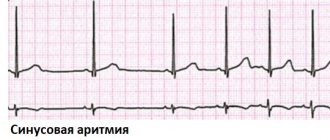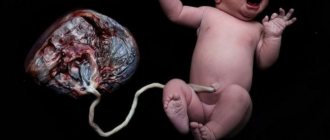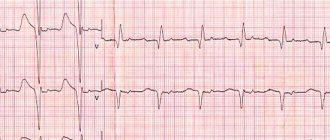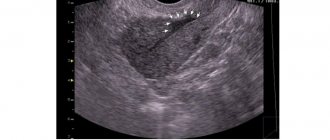Anasarca - main symptoms:
- Headache
- Weakness
- Dizziness
- Fever
- Spider veins
- Swelling of the legs
- Runny nose
- Tearing
- Malaise
- Rapid breathing
- Decreased performance
- General swelling
- Weight gain
- Shallow breathing
- Phlebeurysm
- Urinary dysfunction
- Swelling of the nasal mucosa
- Hypersensitivity to light
- Scrotal swelling
- Limited mobility
What is anasarca
Anasarca is a pathological process that is characterized by the accumulation of fluid in the subcutaneous tissue, which will externally manifest itself as edema. In most cases, it is not an independent disease, but develops against the background of other pathological processes in the body.
- Etiology
- Classification
- Symptoms
- Diagnostics
- Treatment
The clinical picture of this disease progresses rather slowly, which often, if there are no other symptoms, leads to a delayed diagnosis. This pathological process does not have clear distinctions by age and gender, but it is extremely rarely diagnosed in newborns.
Only a doctor can determine which disease became the trigger for the development of this disease by carrying out the necessary diagnostic measures. Treatment tactics will depend on what exactly caused this disorder.
In this case, it is difficult to make a long-term prognosis, since the outcome will depend on the timeliness of the treatment started, the clinical and morphological picture, as well as on the general health indicators of the patient. The patient's life expectancy will depend on the form and severity of the disease.
Treatment of swelling using folk remedies
To treat edema caused by heart disease, take birch leaves and buds in equal quantities, crush them and add to them the same amount of bedstraw grass and parsley seeds. Stir and brew one tablespoon of this mixture in a glass of boiling water. The infusion is taken warm 3-4 times a day, a quarter glass.
An infusion of May dandelion leaves helps relieve swelling.
Causes of anasarca
The causes of anasarca are very diverse, so in some cases it is quite difficult to determine exactly why this pathological process occurred.
Clinicians identify the following, the most common factors for the development of this disease:
- renal failure;
- diseases of the cardiovascular system;
- hypothyroidism;
- hyperaldosteronism;
- allergic reactions;
- increased hydrostatic blood pressure;
- formation of stagnant processes in the blood;
- increased permeability of the walls of blood vessels;
- accumulation of sodium in the blood, which leads to a delay in the removal of fluid from the body;
- chronic diseases of the genitourinary system;
- isolated damage to the thyroid gland;
- Quincke's edema;
- the presence of benign or malignant formations;
- disruption of hormone production by the adrenal cortex.
In addition, anasarca is quite often diagnosed in heart failure.
In some cases, anasarca develops as a complication after long-term use of certain medications or alcohol abuse. In some cases, it is not possible to establish the cause of the development of such a pathological process.
Edema in heart failure
Edema, along with shortness of breath and cyanosis, is the leading symptom of cardiac weakness. A patient with heart failure first notices swelling in the ankles, the area of maximum intravascular hydrostatic pressure. With mild decompensation, swelling disappears overnight, only to reappear during the day with increased physical activity.
Hidden edema manifests itself as nocturia.
Generalized edema is characteristic of congestive heart failure of any nature.
In the case of heart disease, edema (with normal proteinemia) develops mainly in low-lying areas of the body. The photo shows severe swelling of the subcutaneous tissue (anasarca) in an elderly patient with right ventricular failure. Due to increasing decompensation, swelling spread to the lower extremities and abdominal skin and led to the development of ascites. The thin upper limbs contrast sharply with the ascitic abdomen and swollen legs and feet.
The spread of edema in heart failure occurs from the bottom up through the genitals and buttocks to the upper parts of the body. The presence of edema is confirmed by the formation of a pit after pressing with a finger; this property is associated with the ease of water movement in the tissues. The same property explains the shift of edema to low-lying areas of the body after many hours in a supine position.
A high degree of swelling can lead to the formation of tension striae, trophic disorders of the skin and nails, even cracking of the skin and the release of fluid to the surface.
In severe cardiac patients, transudation into the serous cavities is observed. Pleural transudates are observed mainly on the right. Large transudates significantly limit breathing. Pleural transudates are observed in both right and left ventricular failure.
Ascites develops mainly with severe edema, mainly with tricuspid valve defects and constrictive pericarditis.
Characteristic of heart failure, a decrease in NaCl excretion by the kidneys, hypoproteinemia (impaired liver synthesis) and proteinuria contribute to a further increase in swelling.
Right ventricular failure with edema can develop as a consequence of primary failure of the left ventricle, but also occur as a result of primary damage and decompensation of the right ventricle due to pulmonary diseases, defects of the tricuspid valve and the pulmonary valve.
The clinical picture of increased pressure and stagnation in the venous system of the systemic circulation is caused by symptoms of the liver and kidneys, anasarca, ascites, etc.
It should be mentioned that such patients suffer from shortness of breath, prefer to be in a semi-sitting position in bed and have pronounced cyanosis of the skin, lips and ears.
F.B.Tishendor
“Swelling in heart failure” and other articles from the section Differential diagnosis by external signs
What is anasarca?
Lungs and pleural cavity;
Pericardial cavity;
Abdominal cavity.
The term anasarca was introduced specifically to focus attention on the critical condition of the body, requiring urgent measures. Diffuse swelling of peripheral tissues does not pose an immediate threat to the body. The accumulation of fluid in cavities (polyserositis) is not so harmless, since a large amount of it disrupts the functioning of internal organs caused by their compression. Particularly dangerous in this regard is compression of the lungs and diaphragm with a decrease in respiratory excursion, which causes ventilation failure and increased hypoxia.
Causes of anasarca
Decrease in plasma oncotic and osmotic pressure;
Redistribution of the ionic composition of blood and intercellular fluid in the form of sodium retention in tissues.
The listed mechanisms can be triggered in the following diseases:
Decompensated heart pathology
with severe congestive heart failure (infarction, myocarditis, various types of cardiomyopathies, heart rhythm disturbances, and others);
Kidney diseases
and excretory system, accompanied by renal failure or impaired urodynamics and urine outflow (nephrotic and nephritic syndromes with glomerulonephritis, pyelonephritis, urolithiasis, renal amyloidosis);
Endocrine pathology in the form of hypothyroidism.
The critical form of this disease is called myxedema. It ends with a sharp decrease in plasma protein levels, which causes fluid loss due to osmotic leakage into the tissues;
Hyperaldosteronism
.
All diseases of the adrenal glands, accompanied by an increase in the synthesis of mineralocorticoids (aldosterone), cause electrolyte disturbances in the body in the form of sodium retention with its concentration in the intercellular space, which leads to an increase in osmotic pressure relative to plasma;
Allergic reactions.
They very rarely cause anasarca, which grows at lightning speed and is called Quincke's edema. Swelling of the respiratory tract (larynx) becomes especially dangerous.
— Found an error in the text? Select it (a few words!) and press Ctrl + Enter
— Did you not like the article or the quality of the information provided? - write to us!
- Inaccurate recipe? — write to us about it, we will definitely clarify it from the original source!
Symptoms of anasarca
The clinical picture of anasarca can develop gradually or progressively. In most cases, you have to deal with the first variant of the disease.
The following are noted:
Edema syndrome. Consists of widespread severe swelling of all body segments. First, the legs and feet swell. In people with renal pathology, primary spread of edema from the face and upper extremities is possible. Over time, the genitals and torso swell. You can confirm the presence of tissue swelling by pressing on it with your finger. The deeper the trace after this, the more pronounced the edematous syndrome;
Dyspnea. It always occurs with anasarca. It is caused by the accumulation of fluid in the pleural cavity (hydrothorax) and its stagnation in the pulmonary circulation. It does not manifest itself for a long time, occurring only with severe compression of both lungs. Patients should be alerted to symptoms such as a feeling of lack of air during exertion, which gradually decreases until shortness of breath at rest;
Cardiomegaly. With anasarca of cardiac origin, a sharply enlarged heart is always recorded. This is a consequence of myocardial hypertrophy and fluid accumulation in the pericardial cavity.
Treatment of anasarca
The possibilities and scope of therapeutic measures for anasarca depend on the cause of its occurrence. Under no circumstances should you:
Flood the body;
Take products containing sodium;
Failing to provide assistance.
Treatment for anasarca should include:
Dehydration of the body. Achieved through intensive intravenous diuretic therapy with loop diuretics in high doses (Trifas, Lasix, furosemide). Prescribed in all cases of anasarca, regardless of origin;
Cardioprotective therapy. In case of cardiac pathology, it is imperative to strengthen the heart muscle. Cardiac glycosides (digoxin, strophanthin, korglykon) and metabolic drugs (mildronate, metamax, ATP) can help with this;
Hemodialysis and ultrafiltration of plasma. Indicated for anasarca of renal origin. Such events may be the only way out of the current situation;
Glucocorticoids and antihistamines (dexamethasone, methylprednisolone, tavegil, suprastin). Indicated for anasarca of allergic origin. Hormones can be used as membrane stabilizers of vascular walls in other types of anasarca;
Increased plasma oncotic pressure. Mandatory for myxedema. Achieved by infusion of plasma and albumin. Subsequently, hormone replacement therapy with L-thyroxine is prescribed.
Congestive heart failure is by far the most common cause of anasarca. Every patient with cardiac pathology must monitor his condition to prevent its occurrence!
Author of the article: Yulia Valerievna Vafaeva, nephrologist
Classification
Anasarca is classified based on the etiological factor:
- traumatic - develops against the background of mechanical damage to the skin, in most cases does not require specific treatment, goes away on its own as the integrity of the blood vessels is restored;
- inflammatory – develops against the background of the development of certain inflammatory processes in the body, which can cause the development of serious complications;
- as a result of impaired blood flow or lymphatic system;
- as a consequence of metabolic disorders in the body.
The form of this pathological process can only be determined through diagnostic measures. Self-medication is strongly discouraged.
Causes and risk factors
The most common causes of anasarca seen by your doctor are heart failure, cirrhosis of the liver, kidney failure, and pregnancy. Other causes of anasarca are venous obstruction, burns, trauma, malignant neoplasms, etc.
Symptoms of the disease
The danger of this disease lies not only in its clinical and morphological picture, but also in the fact that it progresses slowly and often leads to a delayed start of treatment.
In general, anasarca symptoms have the following:
- increased body temperature;
- swelling of the lower extremities, which gradually rises along the body;
- feeling of weakness, general malaise, even after a full, long rest;
- swelling of the mucous membrane of the nasal passage, resulting in chronic rhinitis;
- lacrimation, increased sensitivity to light stimuli;
- limited movement, decreased performance;
- weight gain for no apparent reason;
- spider veins throughout the body, varicose veins;
- headaches, dizziness;
- for diseases of the genitourinary system - swelling of the scrotum, problems with urination;
- breathing becomes shallow, rapid, and there may be attacks of apnea at night.
Swelling of the legs
In addition, it should be noted that the specific clinical picture will be supplemented by signs that are characteristic of the underlying factor. If you have a personal history of chronic diseases, then in this case their relapse is possible.
How does ascites develop?
The walls of the abdominal cavity are covered with a serous membrane (peritoneum). The membrane on the anterior inner surface of the abdomen is called the parietal peritoneum. The same serous membrane lines the free edge of the internal organs, softening their friction during movements (visceral peritoneum). The structure of the serous membrane is complex - it contains connective tissue fibers, blood and lymphatic vessels.
Fluid enters the abdominal cavity from the blood vessels that supply the serosa. In essence, this is plasma that has entered the cavity through the vascular walls. It spreads naturally and fulfills its physiological role. The plasma is constantly absorbed back into the bloodstream through the lymphatic vessels.
Ascites occurs when there is an increase in the amount of fluid that leaks into the abdominal cavity or when the lymphatic vessels do not absorb excess fluid. In case of serious metabolic disorders, electrolytes and protein compounds enter the abdominal cavity along with plasma. This increases the oncotic pressure and provokes even more active sweating of the plasma to restore the equilibrium of concentrations between blood and fluid in the abdomen.
The accumulation of fluid in the abdominal cavity serves as an excellent environment for the development of microorganisms, and also interferes with the normal functioning of internal organs.
Diagnostics
Since there are more than enough reasons for the development of such a pathological process, comprehensive diagnostics will be required to determine the etiological factor.
First of all, the patient is examined by the following specialists:
- endocrinologist;
- nephrologist;
- neurologist;
- hematologist;
- cardiologist.
If you suspect cancer, you will additionally need to consult an oncologist.
Further diagnostic measures are determined on an individual basis and may include the following:
- UAC and deployed BAC;
- general analysis of urine and feces;
- Ultrasound of the genitourinary system, abdominal cavity;
- chest x-ray;
- ECG;
- CT, MRI of the head;
- test for allergic reactions;
- test for tumor markers.
As a rule, the diagnostic program is drawn up based on the current clinical picture and data that were collected during the initial examination.
Treatment of anasarca
Since anasarca is often a consequence of certain pathological processes in the body, the course of basic therapy will be aimed primarily at eliminating the root cause. The issue of hospitalization is decided on an individual basis, but if angioedema is diagnosed, then urgent medical attention is required.
In most cases, treatment of anasarca is carried out using conservative methods: the doctor prescribes appropriate medications, and, if necessary, a diet and a special daily routine. The pharmacological part of therapy can be based on the following drugs:
- antibiotics;
- non-steroidal anti-inflammatory drugs;
- decongestants;
- diuretics;
- nootropic;
- to improve blood circulation;
- vitamin and mineral complexes.
In some cases, surgery may be necessary followed by a period of rehabilitation.
There is no prophylaxis for anasarca as such. In this case, it is advisable to consult a doctor at the first symptoms, rather than attempt to eliminate the symptoms yourself.
What to do?
If you think you have Anasarca
and the symptoms characteristic of this disease, then doctors can help you: therapist, endocrinologist, nephrologist.
We wish everyone good health!
Diseases with similar symptoms
ARVI (matching symptoms: 7 out of 20)
What is ARVI? Acute respiratory viral infections are contagious diseases of viral etiology that affect the body through the respiratory tract by airborne droplets. Most often, this disease is diagnosed in children aged 3–14 years. As statistics show, ARVI does not develop in infants; only isolated cases have been reported in which a child at that age suffered from the disease.
Did you like the article? Share with friends on social networks:










